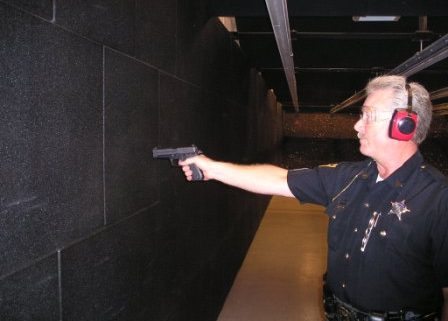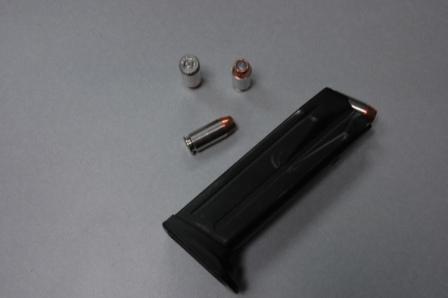Bang, Bang, That Awful Sound
Experts are often asked what kind of entrance and exit wounds are produced by police ammunition. The rounds (bullets) in the photograph below are hollow point rounds similar in design to those fired from the pistol pictured above. This is what they look like before they’re fired.
They’re about the diameter of the silver Sharpie pens I use to sign books. That’s pretty close to the size of most entrance wounds caused by these rounds—the size of the bullet.
Before moving on, I suggest listening to Cher’s version of Bang Bang while you read the balance of this short article, and after clicking over to the tale of my own “Bang Bang” experience.
Pictured below is an entrance wound caused by 9mm round at point blank range, a close contact gunshot wound. Obviously, this was a fatal wound since I took this picture during the autopsy of the victim. Note the post-autopsy stitching of the “Y” incision (above right of the photo).
The next picture is of one of the rounds after it was fired at point blank range into the firing range wall (yes, the major fired the weapon just after I took the picture). The round passed through the self-healing wall tiles, striking the concrete and steel wall on the the other side. Hitting the solid surface head-on caused the bullet to expand and fracture which often creates the large and flesh-torn exit wounds we sometimes see in shooting victims.
Once inside the body, those bullet slivers/fragments can break off causing further internal damage. The size of an exit wound depends on what the bullet hits inside the body. If the bullet strikes only soft tissue the wound will likely be less traumatic, unless, of course, it compromises a major blood vessel. If it hits bone, expect much more damage. Easy rule of thumb—the larger the caliber (bullet size), the bigger the hole.
Bullets that hit something other than their intended target, such as a brick wall or a metal lamp post, can break apart sending pieces of flying copper and lead fragments (shrapnel) into crowds of innocent bystanders. Those flying fragments are just as lethal as any intact, full-sized bullet.
FYI – Bullets don’t always stop someone, nor do they always kill. I’ve seen shooting victims get up and run after they’d been shot several times. And, for goodness sake, writers, people don’t fly twenty feet backward after they’ve been struck by a bullet or shotgun blast. They just fall down and bleed. They may even moan a lot. That’s if they don’t get back up and start shooting again.






